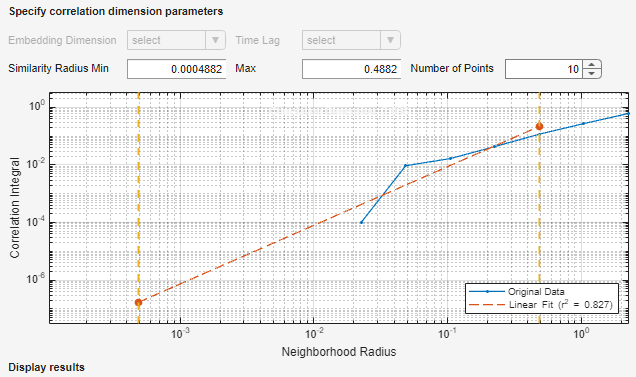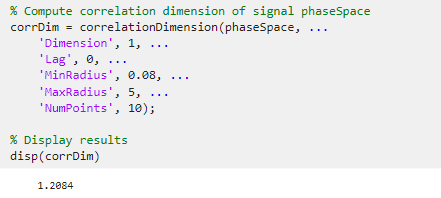Estimate Correlation Dimension
Estimate the correlation dimension of a uniformly sampled signal in the Live Editor
Description
The Estimate Correlation Dimension task lets you interactively estimate the correlation dimension of a uniformly sampled signal. The task automatically generates MATLAB® code for your live script. For more information about Live Editor tasks generally, see Add Interactive Tasks to a Live Script.
Correlation dimension is the measure of dimensionality of the space occupied by a set of random points. Correlation dimension is estimated as the slope of the correlation integral versus the range of radius of similarity. Use correlation dimension as a characteristic measure to distinguish between deterministic chaos and random noise, to detect potential faults.
Open the Task
To add the Estimate Correlation Dimension task to a live script in the MATLAB Editor:
On the Live Editor tab, select Task > Estimate Correlation Dimension.
In a code block in your script, type a relevant keyword, such as
correlationorcorrelation dimension. SelectEstimate Correlation Dimensionfrom the suggested command completions.
Examples
Related Examples
Parameters
Version History
Introduced in R2019b







